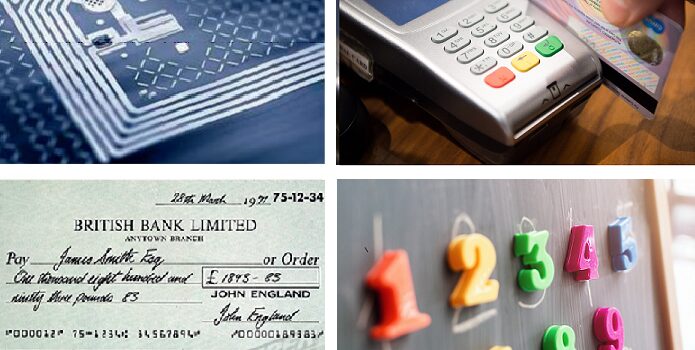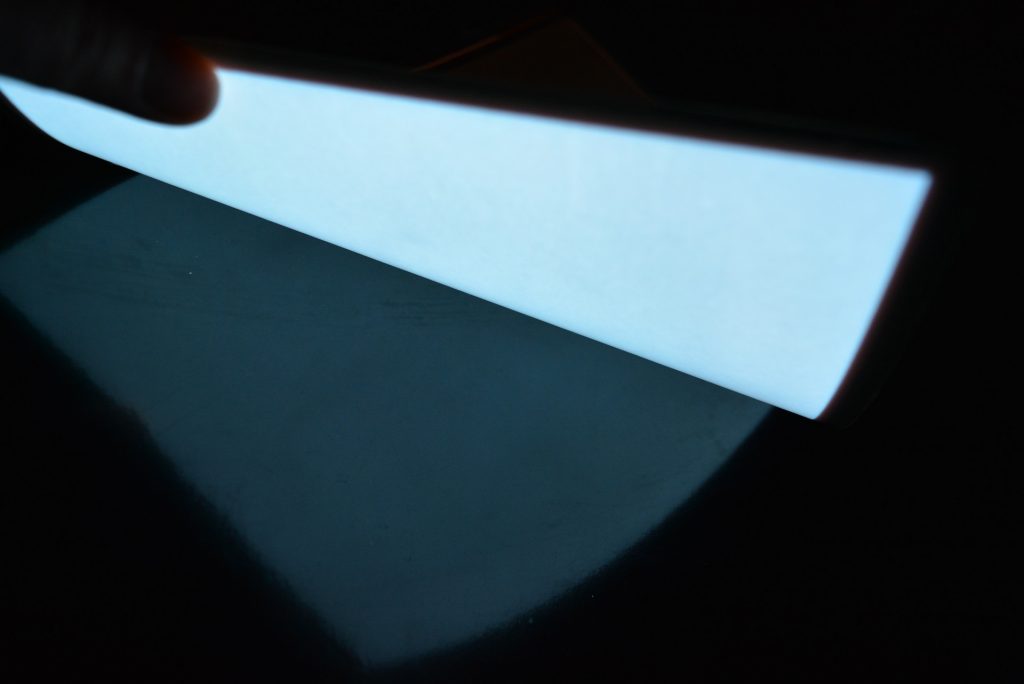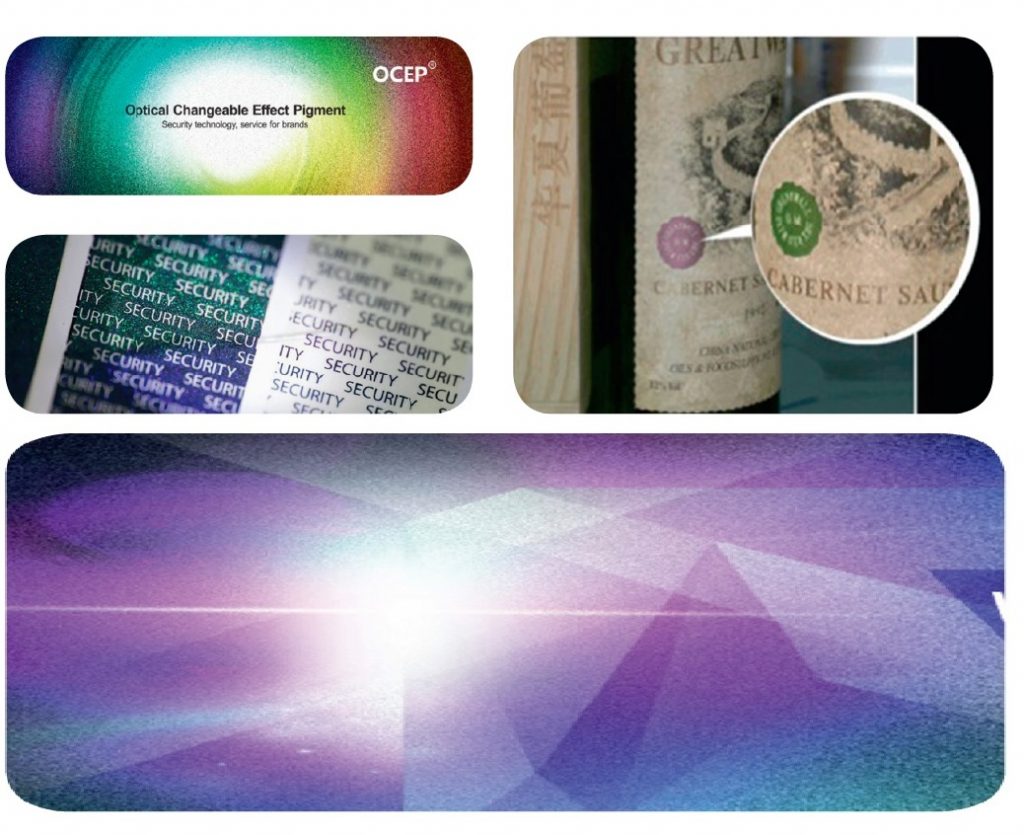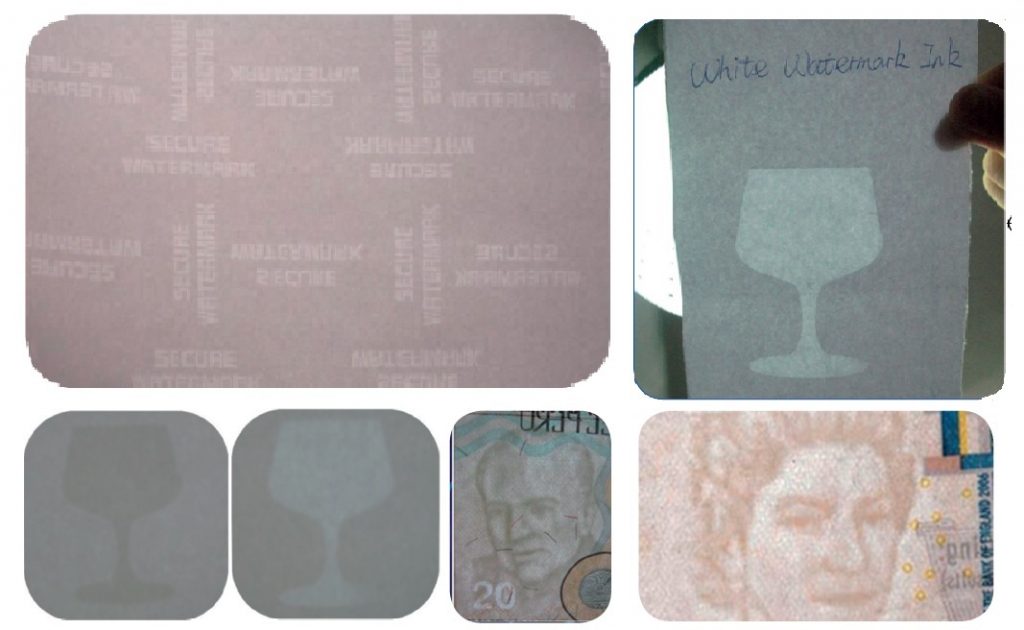Securing labels and packaging against counterfeit and forgery. Part 4


The designers of labels and packaging which, apart from their functional features, have to also serve as protection of an item or its external display against forgery, copying, or counterfeit, need to show their imagination and creativity of a project in order to predict the counterfeiter’s efforts to copy the protection and take a step ahead of them. Special inks and varnishes provide a wide set of tools for these actions. Aside from the fact that counterfeiters often do not have the access to or knowledge about the majority of existing special inks, the passive nature of their role in this game is important as well. They are not the ones who create the product’ssecurity, they just try to copy it. It means that the designer’s role is to actively create a security feature or to change an already existing one.
In order to fulfill this role, special inks and varnishes from the ranges naturally not used in security printing may allow to creatively make a new, unusual type of protection. In this part of the series of articles about security printing of labels and packaging, I will focus on these types of special inks and varnishes in particular.
According to my knowledge, some of the inks and varnishes presented below have not been used in printing security so far, some have been used for a long time but the method of their use is waiting for new concepts of application, and some in an unobvious way may become starting points to create a new type of security.
Electroluminescent inks
One of the most interesting solutions which allow to make packaging or a label more attractive both in terms of interactiveness and security against copying is the use of electroluminescent inks.
These inks glow after plugging them into the source of power. They can be used for playing a kind of a game with the recipient by somewhat imposing a playful interaction on them. Detection of the authenticity of the product can be made by providing the electricity to the printed area, under the influence of which this area will start glowing.
Scented varnishes
Each year, scented varnishes, equipped with fragrances inspired by nature scents or created from a unique composition provided by an end user, are used increasingly more often in marketing and advertising.
In this case, the protection against counterfeit is a function of the uniqueness of a scent composition. It is quite an unconventional, unobvious and perhaps a bit futuristic solution, but it is possible to imagine a creation of such a fragrance (vide high class perfume), specific only for a given brand, which would be impossible to copy.
Magnetic inks
Magnetic inks contain ferromagnets, which can be carriers of small pieces of information saved magnetically in them. In this example, a type and strength of security depends on both the creativity of the designer and a detection device used (reader of magnetically stored information). One type of magnetic inks can be MCIR (Magnetic Ink Character Recognition) inks, which have been used for many years in securing bank cheques.

Electrically conductive inks
A type of inks which combines both utility features and marketing suitability as well as giving the possibility of securing the product against forgery are electrically conductive inks (which should not be mistaken with electroluminescent inks, which glow after plugging them into the electricity).
The authenticity check of the product could take place after plugging the ink into the source of power or closed electric circuit, which would result in some kind of a sound or light signal. It is hard to imagine a counterfeiter who would have both the access to such an ink and the technological possibilities of printing such a security.




Optically variable and pearlescent varnishes
There is an entire range of varnishes which may find or have already found their use in security printing. These are, among others, optically variable varnishes (including OVI – Optically Variable Inks – used for high class security printing), pearlescent, glitter and interferential varnishes, which sparkle in multiple colours, like a rainbow, like pearls, changing colours depending on a viewing angle, perfect for protecting the documents as well as packaging and labels against counterfeit.
To create a sort of a soft security, perceptible varnishes can be used. These are varnishes which texture, thickness, or structure can be felt by hand, by using a combination of various textures and pigments we can obtain a one-of-a-kind, unique texture of a packaging or a label, specific only to a given brand.
Other varnishes for security
There are also copying varnishes, which have the ability to transfer the inscriptions under the influence of the pressure from using pen or temperature. These ones can also be successfully adapted to create some form of protection of a label or packaging against counterfeit.
A completely different type of varnishes are watermark-imitating varnishes, which have been used for a long time in printing relatively uncomplicated securities of documents. These varnishes can be printed by using average printing machines, however, they give off an unusual effect, deceptively resembling a watermark used e.g. in production of banknotes.
Such a varnish could be used, for example, for printing a special label which, after placing under a source of a strong light, would reveal a watermark, e.g. in a shape of a producer’s logo..
Penetrating inks
Other inks, which have been used in printing securities for a long time, which can be creatively used in printing protecting elements on labels or packaging against forgery, copying, or counterfeit, are penetrating inks. These inks are able to penetrate the structure of a substrate, are black on the front side and red on the back side. The label will remain black on one side, while on the other side it will colour in a specific red shade, very difficult for a counterfeiter to replicate.
Erasable inks
Erasable inks can also be used in security printing. It is a range of inks in a full colour palette, which are characterised by a possibility to simply remove them from a printout by using an average office rubber. Thanks to this solution, someone equipped with such a simple and commonly accessible tool which is, undoubtely, an office rubber, can easily check the authenticity of a product. Of course, a disadvantage of this solution is its one-time use.






To special inks and varnishes which can be used in security printing, not mentioned in this article nor in the previous ones, one can add an entire palette of their variations and iterations, thus creating unlimited possibilities of use in security printing of labels and packaging. There are also types that limited framework of this publication did not allow me to name and describe. The creativity of producers of pigments and inks contunuously delivers new solutions and ideas to create original, unique, unconventional solutions. The race of securities’ creators vs. counterfeiters continues. Fortunately, these first ones are still at the forefront.


The original article can be found in periodical Świat DRUKU, issue 10/2022



